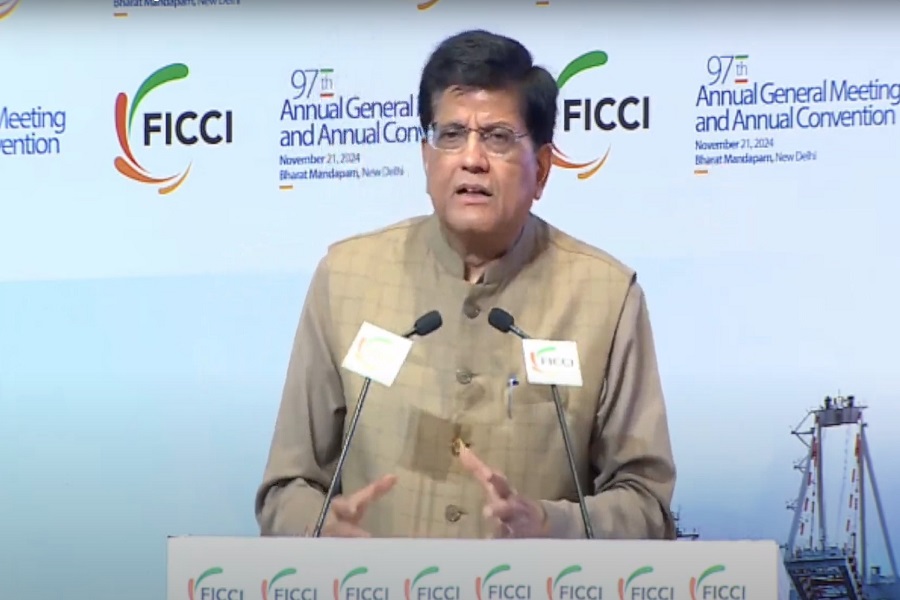Amid opposition`s criticism of GDP numbers, Centre explains the economics behind it

Follow us Now on Telegram ! Get daily 10 - 12 important updates on Business, Finance and Investment. Join our Telegram Channel
Amid the opposition attacking the government over the GDP data for the first quarter (April-June) period of the current fiscal, the Centre on Friday issued a lengthy clarification regarding the figures released a couple of weeks back.
India saw a GDP growth rate of 7.8 per cent in the first quarter (April-June) of 2023-24, as per data released on August 31. However the opposition Congress had criticised it by saying that it was inflated.
"India’s real GDP growth was 7.8 per cent year on year in Q1 FY24 (first quarter of 2023-24). This is as per the income or production approach. As per the expenditure approach, it would have been lower. So, a balancing figure – statistical discrepancy – is added to the expenditure approach estimate," the Finance Ministry said in a series of posts on X (formerly Twitter).
These discrepancies are both positive and negative. Over time, they wash out. In fact, in FY23 and FY22, the ‘statistical discrepancy’ was negative. In other words, growth as per the income approach was lower.
Using the expenditure approach, it would have been higher than the 7.2 per cent reported for FY23 and higher than the 9.1 per cent reported for FY22, it said.
"India consistently uses the income side approach for calculating GDP growth for various reasons. It does not switch between the two approaches depending on which one is favourable," the ministry said.
As for nominal GDP growth being lower than real GDP growth, this is a new bogey being spread to discredit the GDP numbers and indicate that underlying economic activity is quite weak. Both do not stand up to scrutiny, it said.
"India’s GDP deflator is dominated by the wholesale price index (WPI) peaked in the first quarter of 2022-23 due to the oil and food price increases in the wake of the war in Ukraine and supply-side disruptions. Prices began to come down from August 2023 onwards. Hence, WPI is now contracting year on year. It will soon pass once the statistical base effect disappears," the Finance Ministry said.
If inflation were higher, critics would argue that nominal GDP growth is much higher because of inflation and that there was little underlying activity, it added.
The Ministry of Statistics calculates quarterly gross value added in real terms first, and then, using the deflator, nominal values are obtained. No wonder nominal growth rates have slowed, with WPI contracting in recent months. This will normalise in the coming months, the post said.
"So, arguing that nominal GDP growth is more reliable because India has issues with its calculation of GDP deflator is to invent an argument where none exists. This is just to justify the liking for nominal GDP growth because it has been moderating in recent quarters after the high growth in the first fiscal quarter of FY23. In other words, critics want to latch on to anything that does not paint the Indian economy in a good light," said the ministry.
Ideally, critics would have done well to look at several other growth indicators to see if other data match their conclusions, it noted. Purchasing Managers’ Indices indicate that the manufacturing and services sectors are growing. Bank credit growth is in double digits. Consumption is improving, and the government has vigorously ramped up capital expenditure, the ministry added.
If anything, India’s growth numbers might understate the reality because manufacturing growth indicated by the Index of Industrial Production is far lower than what manufacturing companies are reporting.
Indian GDP data are not seasonally adjusted, and they are also revised multiple times before they are finalised three years after the close of the relevant financial year. It is wrong to look at the underlying economic activity based on GDP indicators alone. Higher frequency data must be relied upon to form a view of the strength of the economic activity.
Many international agencies have revised up their growth forecast for FY24 after the first quarter data for FY24 was released. They would not have done so if the underlying economic activity was weak, the ministry pointed out.






















